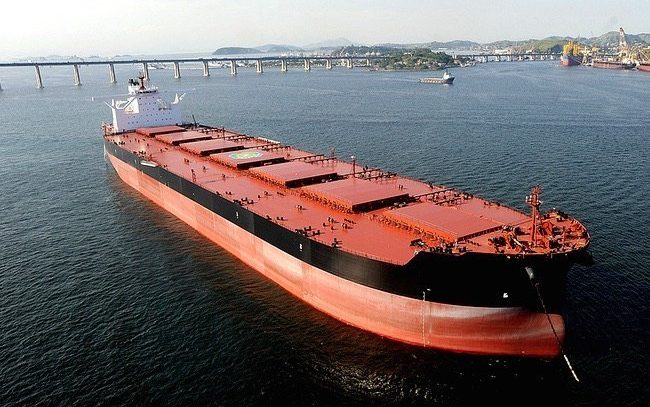Can dry bulk have success without excess?

Felipe Simian, CEO of dry bulk firm Nachipa, on the markets ahead.
Over the last two decades any sustained uptick in dry bulk freight rates has triggered a tsunami of newbuild orders. That was certainly the case when there were spikes in 2007-2008, 2010-2011, and 2013-2014.
Will this time be any different? Can the dry bulk sector avoid undermining its opportunity for success? Could 2021 be the next 2006 and come to be seen as the year before the next cycle’s momentum hit its stride?
In my experience a lot of the people answering, ‘yes’ to those questions are the same people who think we’ve arrived in a ‘new normal’. While I’m inclined to respond positively to those questions, I don’t believe that we’re in a new era.
I do, however, believe that the complexities of the shipping industry are more visible than they once were, and that’s making a lot more people critically analyse the sector in new ways.
I’ve been cautiously optimistic about the direction of dry bulk freight rates since early 2018. Rates had bottomed in 2016 after several years of depressed conditions, and given trends in cargo and fleet growth we seemed to be at the beginning of a sustainable uplift. Unfortunately, two black swans interrupted. First the Brumadinho dam disaster in 2019, and then the global pandemic a year later.
So what makes me more optimistic about the timing now? Three elements: Regulation, commodity economics, and construction.
Construction
About three-fifths of the dry bulk fleet is non-eco, and approximately 10% are more than a quarter century old. What’s the working life of these vessels post- Energy Efficiency Existing Ship Index (EEXI) and the Carbon Intensity Indicator (CII)?
They’re going to need to be replaced, and eventually owners will need to make a choice. However, even if they make that choice tomorrow the average lead time in recent years has been nearly two years. Moreover there are very few slots left in 2023 – let alone next year. We can predict with a reasonable level of accuracy that the current state of the orderbook will mean low dry bulk fleet growth in the next couple of years.
Regulation
In little more than a year we’ll see the arrival of the EEXI and CII requirements. Progress to reduce shipping’s environmental impact fluctuates year to year, but the overall trend and direction of legislators’ ambitions are unmistakeable.
In the coming decades these regulations should result in much greener ships. Nevertheless, in the short term there’s going to be a lot of vintage vessels that need to earn a living. One of the few ways to comply with those rules will be to slow steam, and that’ll result in an effective reduction of vessel supply.
We’re also seeing a lot of uncertainty surrounding propulsion choices. It’s become common to hear companies say that they’ll buy zero-emission vessels once they’re commercially viable, and there’s appropriate refuelling infrastructure in place. This is the classic ‘chicken or the egg’ causality dilemma, and the result on the orderbook is equally characteristic.
Is it going to be ammonia? Or hydrogen? Maybe methanol? Nobody knows, and nobody wants to be the guy who bet the farm on newbuilds powered by the equivalent of Betamax.
In any case, almost all of the biggest shipping banks (ex-China) have signed the Poseidon Principles. So unless you’re a copper-bottomed credit you’ll be struggling to get rates much below double digits to finance newbuilds with hydrocarbon propulsion anyway.
Commodity economics
Grains have been strong. Cement has been robust. Clinker has been good too.. The list goes on. We’re seeing broad demand across almost all commodities and it’s leading to some very optimistic speculation.
As I’ve said before, unless we see colossal and sustained investment across the world in the construction of low carbon infrastructure, or the urbanisation and industrialisation of a major nation, such as India, we’re unlikely to be entering a new ‘supercycle’.
Nevertheless, it’s relatively common to hear people in shipping talk about the rising price of commodities as a threat to the positive rates we’re seeing across dry bulk classes. However, the reality is that even the highest cost exporters are making substantial profits right now, and commodity prices could decline substantially before the cost of shipping seriously impacts their margins.
Over the medium to long term I would expect commodities which are more integral to demand for renewable infrastructure to have a slightly more positive outlook. Whereas those which are more reliant on Chinese growth, such as iron ore and coking coal, are likely to face headwinds.
The inefficiencies that we’re seeing at ports worldwide are providing huge support to vessel availability. Our handysizes have been busy on trades into and out of SE Asia, and have witnessed this first-hand. What’s also helping considerably is how many minor bulks that used to be carried in containers on liner backhauls are now filling the cargo holds of smaller bulkers such as ours.
Drewry’s base case for the next five years estimates compound annual demand growth of 3.8% compared to fleet growth of 2.6%. That’s a most-likely scenario which presumes localised lockdowns will continue, trade disputes remain, and a globalised economic recovery – but hopefully no more black swans on the scale of Brumadinho or Covid-19!
Shipping is cyclical and the market will eventually revert to its historical norms course. There are no sure things in our industry, but if I had to pick one macro challenge in the years ahead, it’s the end of the current Chinese five-year plan. Beijing has made clear its desire to bolster strategic reserves of commodities, but once those stockpiles have been accumulated we could see demand drop substantially. As always when it comes to buying newbuildings in the years ahead, caveat emptor!

Very well written!!!